There are over 114 endangered species in Florida. With unique geography, diverse ecosystems ranging from the subtropical to the temperate, Florida has a rich wildlife and is home to many species.
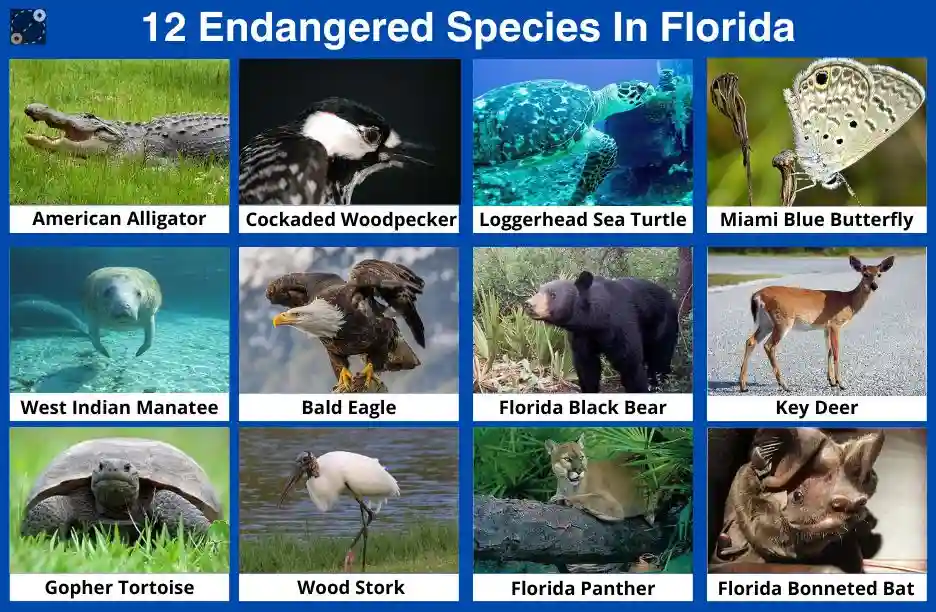
Unfortunately, some of these species are currently in danger of going extinct due to various reasons. Whether it’s due to habitat loss, pollution, climate change, or human disturbance, these endangered species are a sign of big environmental issues affecting Florida.
In this article we’ll look at those different endangered species in Florida, their reasons as to why they are endangered and what necessary actions have been taken to protect them.
Endangered Species In Florida
Endangered species are plant or animal species that are at risk of becoming extinct in the near future. This means that their population has declined significantly, due to various factors such as habitat destruction, pollution, overexploitation, etc.
Below is a list of endangered species in Florida which we’ll be discussing one by one.
- American Alligator
- Red-cockaded Woodpecker
- Loggerhead Sea Turtle
- Miami Blue Butterfly
- West Indian Manatee
- Bald Eagle
- Florida Black Bear
- Key Deer
- Gopher Tortoise
- Wood Stork
- Florida Panther
- Florida Bonneted Bat
Related Post : Pioneer Species Examples
American Alligator
The American alligator is a reptile found in southeastern United States, including Florida. They live in freshwater such as swamps, marshes, and lakes. American alligators need areas with adequate water, vegetation, and basking spots to regulate their body temperature.
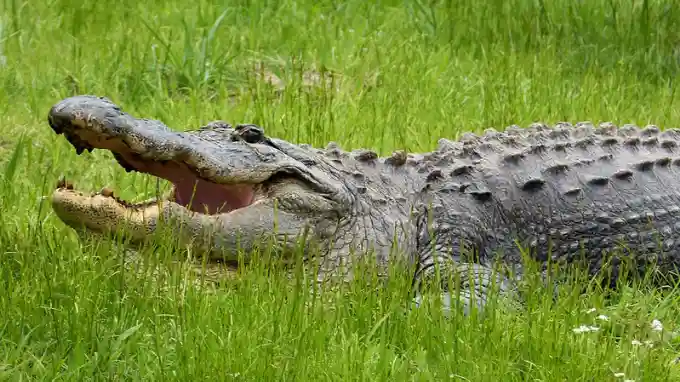
This reptile was threatened with extinction and was listed as one of the endangered species in Florida in 1967 due to habitat destruction and overhunting. However, strict conservation measures, like legal protection, habitat restoration, and sustainable practices, have led to the recovery of their populations.
As a result the American alligator was removed from the Endangered Species in Florida list in 1987. Currently, Florida is home to over 1.25 million alligators, but habitat loss caused by development and wetland drainage continues to remain a threat to the species.
Related : Water Birds Of Florida
Red-cockaded Woodpecker
The Red-cockaded Woodpecker is a small to medium-sized woodpecker which is black and white with distinctive large white cheek patches. They live in mature pine forests, especially longleaf pine ecosystems and eat insects, ants, beetles, also fruits and seeds.
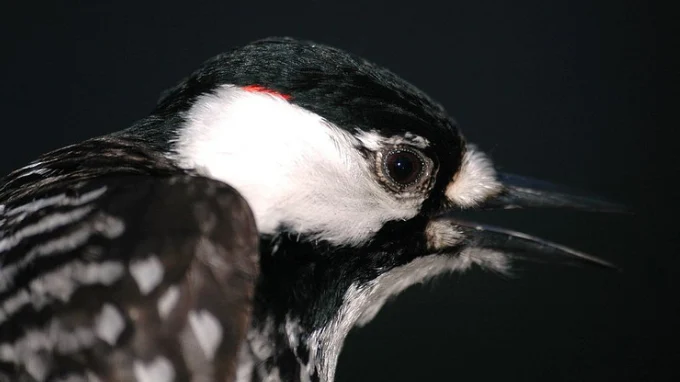
The Red-cockaded Woodpecker is one of the endangered species in Florida due to habitat loss and degradation caused by logging, fire control, and urbanization. Loss of mature pine forests and fragmentation of their habitat have greatly reduced their numbers to 12,500 in Florida.
In response to these being included in the list of endangered species in Florida, strict conservation efforts have been taken like habitat restoration, prescribed burning, installation of artificial nesting cavities, translocation of birds to suitable habitat, and population monitoring.
States including Texas, Louisiana, Alabama, and Georgia’s wildlife managers are also making artificial holes in Longleaf Pine trees in an attempt to boost the number of red-cockaded woodpeckers.
Loggerhead Sea Turtle
The Loggerhead Sea Turtles, also counted among the endangered species in Florida, is a large marine turtle species found in oceans around the world, including the waters off the coast of Florida.
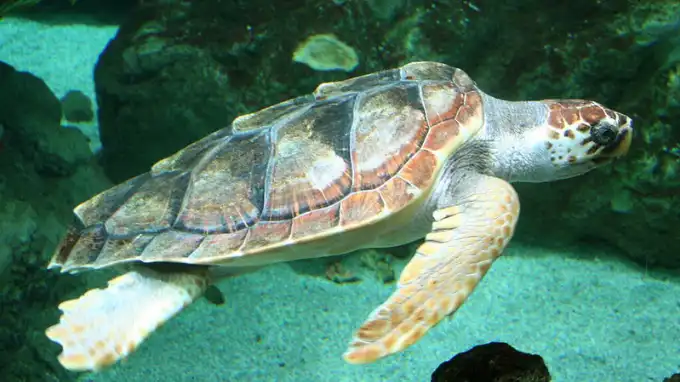
Loggerhead Sea Turtle have reddish-brown shells and large heads and powerful jaws, for crushing and consuming their prey. They are omnivores, and feed on invertebrates such as crabs, mollusks, and jellyfish.
Loggerhead sea turtles are listed as the endangered species in Florida threatened under the U.S. Endangered Species Act since 1978. They face many threats, including pollution, accidental capture in fishing gear, coastal development, and climate change.
Conservation efforts aimed at protecting loggerhead sea turtles include beach monitoring and protection programs. As a result, they had a 24% rise in population between 1989 and 1998, with an estimated total of over 100,000 nests annually.
In 2023, the South Florida-based Loggerhead Marinelife Center recorded a record-breaking 25,025 sea turtle nests.
Miami Blue Butterfly
The Miami Blue Butterfly is a small and strikingly beautiful butterfly native to southern Florida and the Florida Keys. It is known for its vibrant blue and black wing margins and white fringe. It is typically found in coastal habitats, including dunes, coastal scrub, and hammocks.
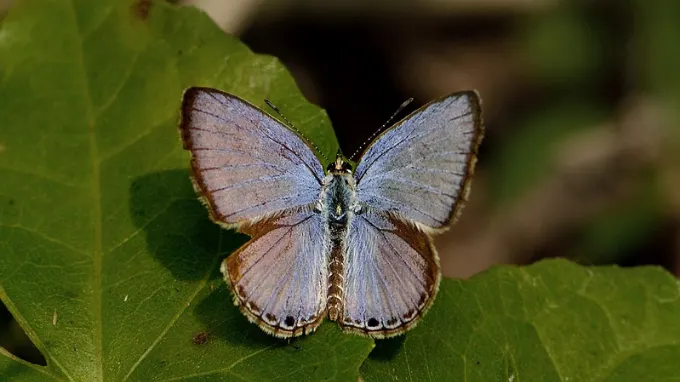
The Miami Blue Butterfly is one of the rarest butterflies in the United States and also one of the endangered species in Florida. Less than fifty of the butterflies were estimated to remain after a few were observed at Bahia Honda State Park in 1999.
As a result they were listed as endangered under the U.S. Endangered Species Act in 2002 and included under endangered species in Florida. In recent years, there have been successful efforts to reintroduce Miami Blue Butterflies into suitable habitats.
The reintroduction programs involve releasing captive-bred butterflies into protected areas and closely monitoring their populations to evaluate their survival and reproductive success.
West Indian Manatee
The West Indian Manatee is a large aquatic mammal known for its gentle nature and slow-moving behavior. They are large, herbivorous marine mammals with rounded bodies, paddle-like flippers. Manatees are herbivores, feeding on aquatic plants such as seagrasses, freshwater grasses, and algae.
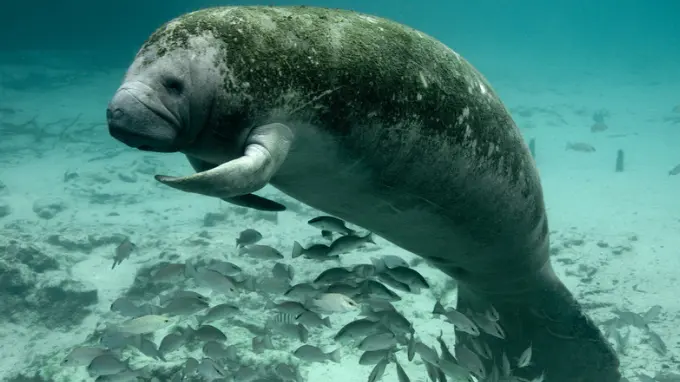
Being among the endangered species in Florida, the West Indian manatee has been listed as endangered in the United States since the 1970s due to warm water habitat loss, illegal hunting, etc. It was classified as vulnerable by the International Union for Conservation of Nature (IUCN) in October 2007.
But due to various conservation efforts, West Indian Manatee were delisted from the endangered species in Florida list in 2017. Unfortunately in 2021, about 1,000 manatees died due to the water pollution from industry and urban growth.
Another data shared by the Florida Fish and Wildlife Conservation Commission states that at least 476 manatees died throughout the state till early October 2023.
Bald Eagle
The Bald Eagle is a majestic bird of prey and one of North America’s most iconic symbols. They are large raptors with white heads and tails contrasting with dark brown bodies. Known for their hunting skills, Bald Eagle feeds on fish but also preys on birds and mammals.
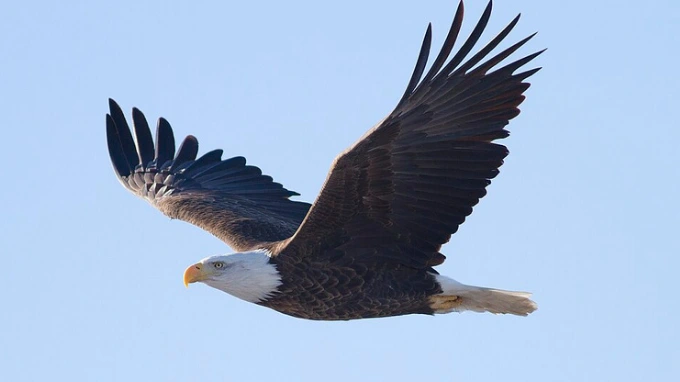
Florida has the largest number of nesting bald eagles with around 1,500 nesting pairs. But once they were included in the list of endangered species in Florida as well. By the mid-20th century, their numbers reduced to dangerously low levels, and they were listed as endangered.
However, in 2007, the U.S. Fish and Wildlife Service officially removed Bald eagle from the endangered species in Florida list after various conservation efforts, like habitat protection, banning the pesticide DDT, and captive breeding and reintroduction programs.
Florida Black Bear
Florida Black Bears are subspecies of the American black bear. They are medium-sized bears with a heavy build and a black coat, some may have a brown or cinnamon color phase as well.
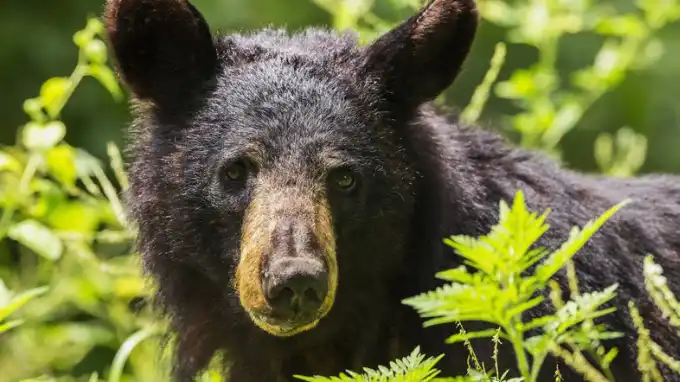
As the only species of bear found in Florida, they are counted in the endangered species in Florida list found in large, close tracts of forested habitat, such as the pine and oak forests. These black bears are omnivorous, eating plant matter such as fruits, berries, nuts, and vegetation, as well as insects and small mammals.
According to the Florida Fish and Wildlife Conservation Commission the Florida black bear is believed to be only 3,000 presently in eight isolated areas across the state, listed as the most endangered species in Florida. The reasons being habitat loss, fragmentation, and human-wildlife conflicts.
Therefore different conservation efforts, like habitat protection, land acquisition, and public education, have been taken to help stabilize their population in some areas.
Key Deer
The Key Deer is a subspecies of the white-tailed deer found in the Florida Keys. They have a reddish-brown coat in the summer, which turns to a duller gray-brown color in the winter. They can also be seen in tropical hardwood hammocks, pine rocklands, and mangrove forests.
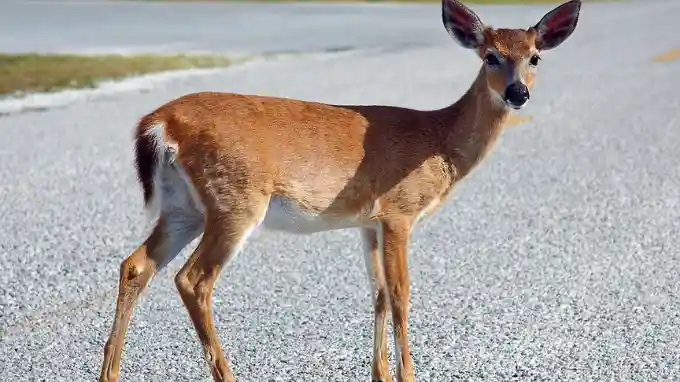
Key deer are primarily browsers, feeding on a variety of plants, including leaves, twigs, fruits, and grasses. They are one of the endangered species in Florida. Historically, early immigrants and passing sailors, as well as local tribes, hunted Key deer for food.
Although hunting was banned in 1939, by the 1950s habitat loss and widespread poaching brought them to close to extinction. According to recent estimates, there are between 700 and 800 Key deer, placing it on the list of endangered species in Florida.
Different conservation efforts were taken such as The National Key Deer Refuge was established as part of conservation efforts, and it covers around 8,500 acres (34 km2) on Big Pine. A section of U.S. Route 1 was also raised in 2003 to enable deer to cross safely across the road.
Gopher Tortoise
The Gopher Tortoise is a medium-sized terrestrial turtle native to the southeastern United States, including Florida. This terrestrial reptile lives up to 70 years in the wild, and got its name for digging deep burrows, to find cover and low-growing plants to eat.
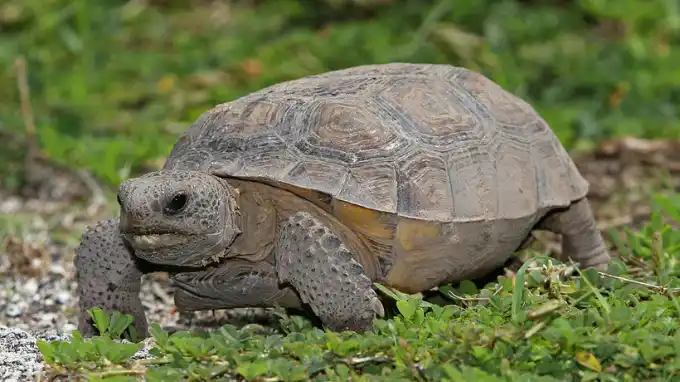
Gopher tortoises are herbivorous, feeding on a variety of grasses, legumes, and low-growing vegetation also consuming fruits, flowers, and mushrooms.
Currently listed as endangered species in Florida, there are around 700,000 Gopher tortoises which is less than a third of what it was a century ago due to habitat loss and fragmentation by urbanization. It is also said that within the next 40 years, the species is expected to lose 20% of its habitat if present conditions continue.
As a result, Gopher tortoises are protected by state and federal laws, making it illegal to harm, harass, capture, or possess them without proper permits. Special measures are taken to protect Gopher tortoise burrows and habitat from disturbance and destruction.
Classified as an endangered species in Florida more shelters are planned to be provided to these tortoises, Manatee County of Florida is planning to rehome over 800 Gopher tortoises on 4,500 acres in Duette Preserve an area believe to be suitable for these tortoises.
Wood Stork
Wood storks are large, long-legged wading birds with a distinctive appearance. They have a bald, wrinkled head and neck. They live in a variety of freshwater and estuarine wetlands, including marshes, ponds, and lakes.
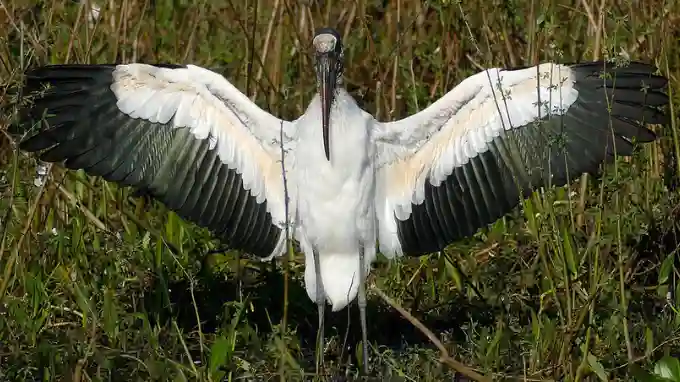
As an endangered species in Florida, Wood Stork is listed as federally threatened in the United States and is considered endangered. Historically, Wood stork populations declined due to degradation, and alteration caused by drainage, water management practices, and human development.
As an endangered species in Florida, Wood storks are protected by state and federal laws, making it illegal to harm, harass, capture, or possess them without proper permits. Special measures are also taken to protect Wood stork nesting sites and habitat from disturbance.
Florida Panther
The Florida Panther is a subspecies of cougar or mountain lion found in the state of Florida. They are large, powerful cats with tawny-colored fur, long tails, and distinctive white markings on their faces, chests, and underbellies.
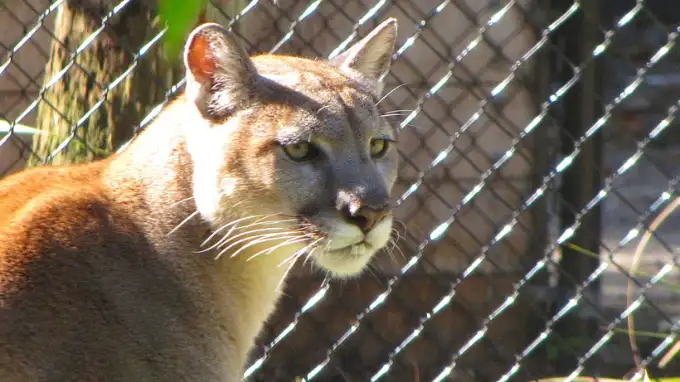
Regarded as an endangered species in Florida, they are carnivorous predators, hunting white-tailed deer but also preying on smaller mammals such as raccoons, rabbits, and wild hogs. Only 100–180 Florida panthers exist in the wild, making it a native species to the state. Since 1967, the animal has been classified as an endangered species in Florida.
Florida Panthers faced severe population declines due to habitat loss, fragmentation, hunting, and vehicle collisions. Recently Florida wildlife officials have announced the first endangered 1-year-old male Florida panther death of 2024 by a vehicle collision.
However, conservation efforts, including habitat protection, land acquisition, wildlife corridors, and captive breeding and reintroduction programs, have helped stabilize populations.
Florida Bonneted Bat
The Florida Bonneted Bat is a rare and endangered species in Florida. It is one of the largest bats in North America, with a wingspan of up to 20 inches and a large, hairless, domed forehead.
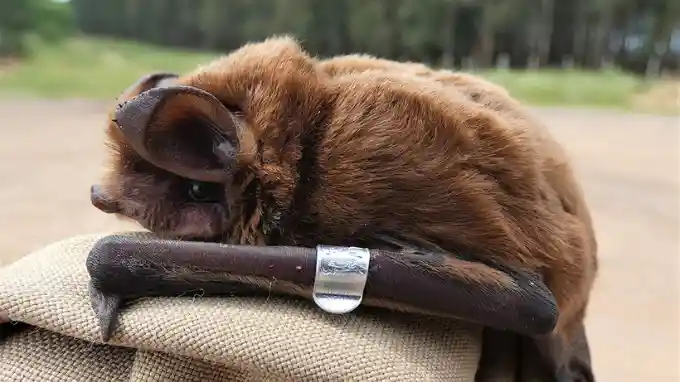
Florida Bonneted Bats are found in subtropical and tropical habitats, including hardwood hammocks, pine forests, and urban areas with mature trees. They are insectivorous, feeding on flying insects such as moths, beetles, and mosquitoes.
Due to its decline in the 1960s and 1970s, the bat was considered extinct in 1980. It is considered as one of the rarest bat species in North America and endangered species in Florida with its population declines being related to habitat loss, weather condition, fragmentation, degradation, as well as human disturbance.
Conservation efforts aimed at protecting the Florida Bonneted Bat include habitat conservation and restoration, research on its ecology and behavior, public education and outreach.
The Endangered Species Coalition (ESC) has recognized the ongoing efforts of Bat Conservation International and Zoo Miami to prevent the extinction of the Florida bonneted bat and remove them from the endangered species in Florida list as one of the most inspirational conservation initiatives of 2023.
Conclusion
Florida is home to a diverse species facing threats such as habitat loss, fragmentation, pollution, and climate change. Due to this there are many endangered species in Florida which can be seen. Urgent conservation efforts, including habitat protection, restoration, and public awareness campaigns, are crucial to protect these species and preserve Florida’s biodiversity. With continued dedication and collaboration, there remains hope for the recovery and sustainable coexistence of these endangered species.
FAQs
What is the rarest animal to see in Florida?
Florida panther is the rarest animal to see in Florida because it is considered as endangered species.
Are there any endangered species in Florida?
There are many endangered species in Florida like : Key Deer, Bald Eagle, American Alligator etc.
Why are animals endangered in Florida?
Loss of habitat and overfishing are the top most reason for the animals endangered in Florida.




